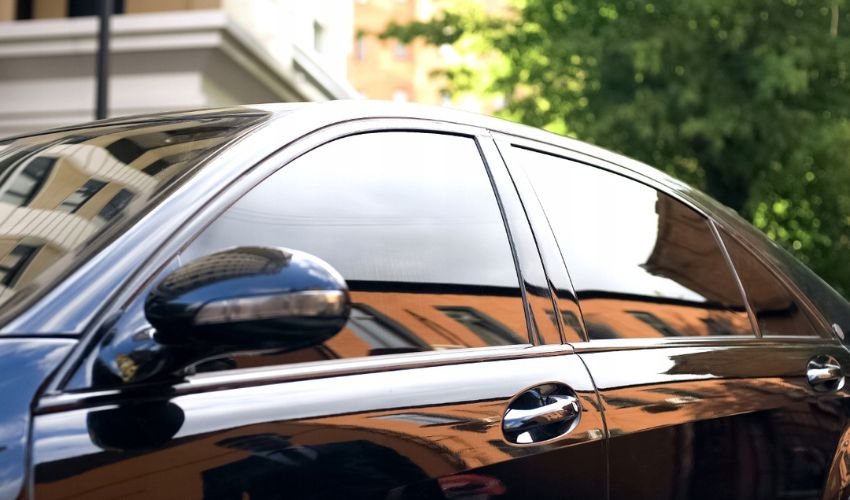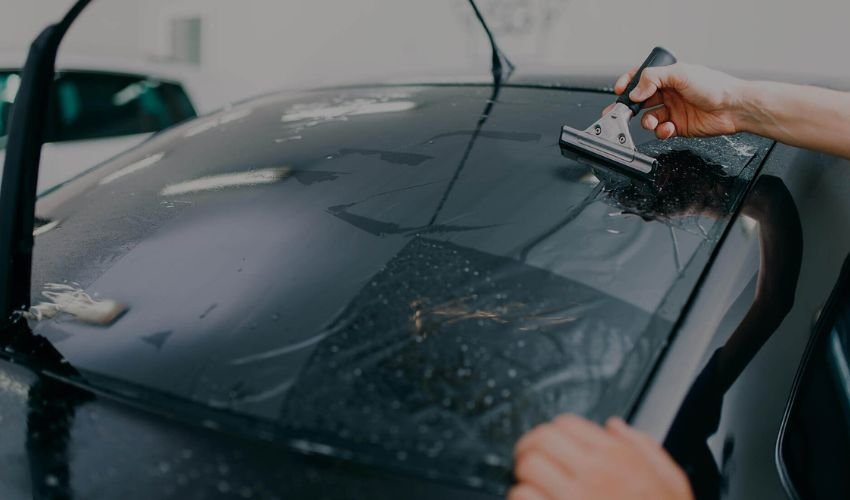Adding window tint to your car can provide many benefits, from privacy to protection from UV rays. But with so many options for darkness and tint levels, how do you choose the right percentage of light blockage? This article will let you know how to choose the best window tint percentage for your car. Let’s start reading what to consider when deciding the percentage of car window tinting.
What is the Window Tint Percentage?

Window tint percentage refers to the amount of visible light able to pass through the tinted film. The percentage ranges from completely clear 0% to an illegal blockage of over 70% in most states. The higher the percentage, the darker the tint will look from outside the vehicle. Most people choose between 20-50% light transmission for their automotive window tint.
Tips to Choose the Best Window Tint Percentage for Your Car

Consider the Look of Your Car

The style and aesthetics of your vehicle should be a top consideration when selecting window tint percentage. Sportier, lower-profile cars can typically pull off darker tints between 5-20% that accentuate sleek lines and contours. Family vehicles, minivans, SUVs and sedans often look best with more moderate 20-35% films that provide privacy without seeming over-tinted. Evaluate what tones and darkness levels visually match your car type and complement its existing features.
Determine Why You Want Tint
Figure out your main reasons and purpose for wanting to add window tint – whether it’s for increased privacy, protection against UV rays, significant heat reduction inside the cabin, or purely for appearance enhancement. Gaining this clarity around your goals and motivations helps narrow down suitable darkness levels appropriately. Security-focused reasons may require darker tints despite slightly reduced outward visibility at night.
Check Your State’s Tint Laws

Before ultimately deciding on a specific percentage of darkness, thoroughly research your state’s laws around automotive window tinting. Many states prohibit tints below 35-50% light transmission on the front driver and passenger windows. Carefully check the regulations in your area so you don’t accidentally install overly dark illegal tint. Facing fines or forced removal defeats the purpose of tinting.
Consider Night Visibility

When looking at different color percentages, you should carefully think about how clear you need to be able to see out the windows at night and when there isn’t much light. An ultra-dark 10% limo tint might give your car a sleek, private look that you love, but it could also make it dangerously harder to see when the sun goes down. Carefully weigh your desire for style against the need to stay safe.
Get Multiple Quotes

Before you buy anything, talk to three to four professional window tint fitters in your area and get quotes for different percentage films that they will put on your car. This activity sheds light on the price models for lighter and darker tints so that you can make the best, most cost-effective choice.
Ask the Experts

Talk to professional tinters in depth about the percentages they think are best for your car type, temperature, driving needs, visibility preferences, and other factors. These window film experts can help you get the right tint fit by giving you useful product knowledge and advice.
Benefits of Tinting Your Car Windows

There are several benefits of tinting for car window:
- Privacy: Darker tints prevent people from seeing inside your car easily. It deters potential theft and protects personal items from view.
- UV ray protection: Window films filter out 99% of harmful ultraviolet rays that can damage skin and fade interiors over time. It helps you avoid sun damage and skin cancer risk.
- Glare reduction: Tinted windows significantly cut down on bright light, allowing for improved visibility and less eye strain.
- Cooler interior: Quality tints can prevent up to 60% of infrared heat from entering through your windows. It keeps your car cooler on hot, sunny days.
- Fade prevention: UV light damages and fades leather, vinyl, and plastic over time. Window tint protects these surfaces from rapid deterioration.
Recommendations for Best Window Tint Percentage

Here are some tint percentage recommendations for common vehicle types and usages:
- Family vehicles, minivans, SUVs – 25-35% tint provides privacy while allowing kids good visibility. Darker is okay on rear windows if it is legal.
- Sedans and commuter cars – 20-30% is ideal for visibility, glare reduction, and some privacy. Stay conservative on driver window tint.
- Performance cars – 15-25% tint range has style and doesn’t compromise visibility much since these vehicles are lower. Check regulations in your state for specifics.
- Limousines, celebrity vehicles – A very dark 5-10% limo tint evokes luxury privacy and UV protection. Make sure a driver can see properly at night.
Get Professional Installation

Once you’ve chosen the best window tint percentage and darkness for your needs, leave the installation to skilled professionals. Mistakes happen easily with DIY films that lead to bubbles, peeling, and visibility issues. Employ a reputable, experienced auto tint shop for optimum results.
Conclusion
Finding the right level of window tint darkness involves balancing privacy, UV protection, visibility, regulations, and personal preference. Evaluate all factors if you don’t know how to choose the best window tint percentage for your car. For most drivers, a moderate 20-35% film offers the prime benefits of tinting without legality risks or driving impediments. Consult experts, too, for recommendations to choose the ideal percentage for your car.





